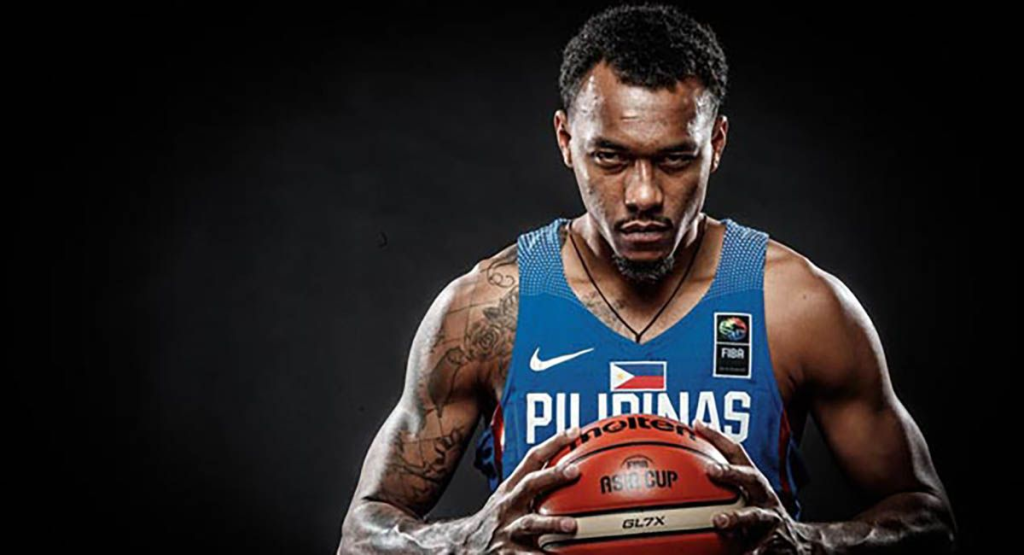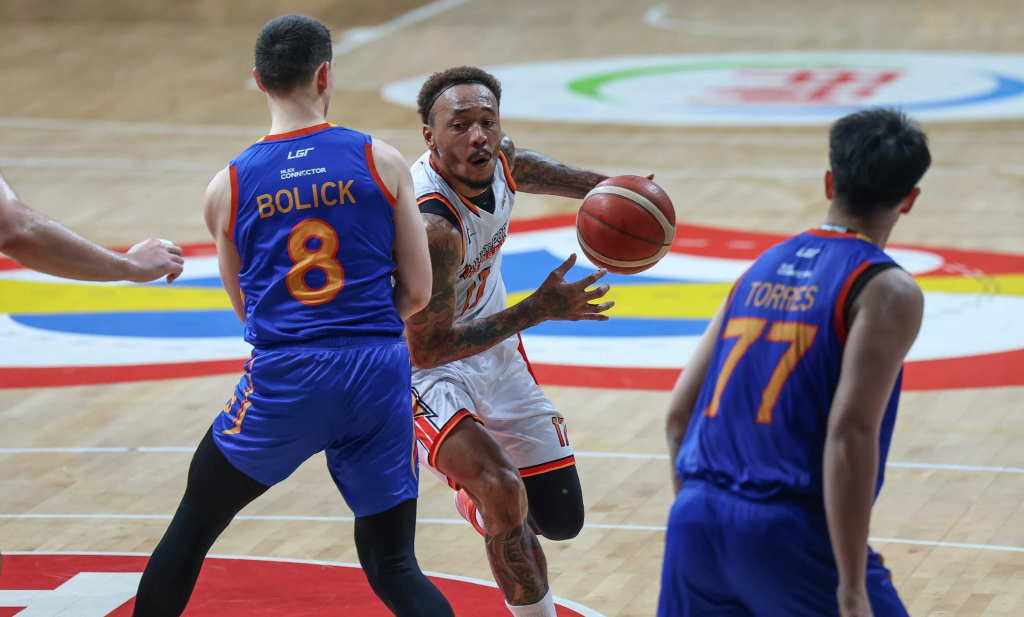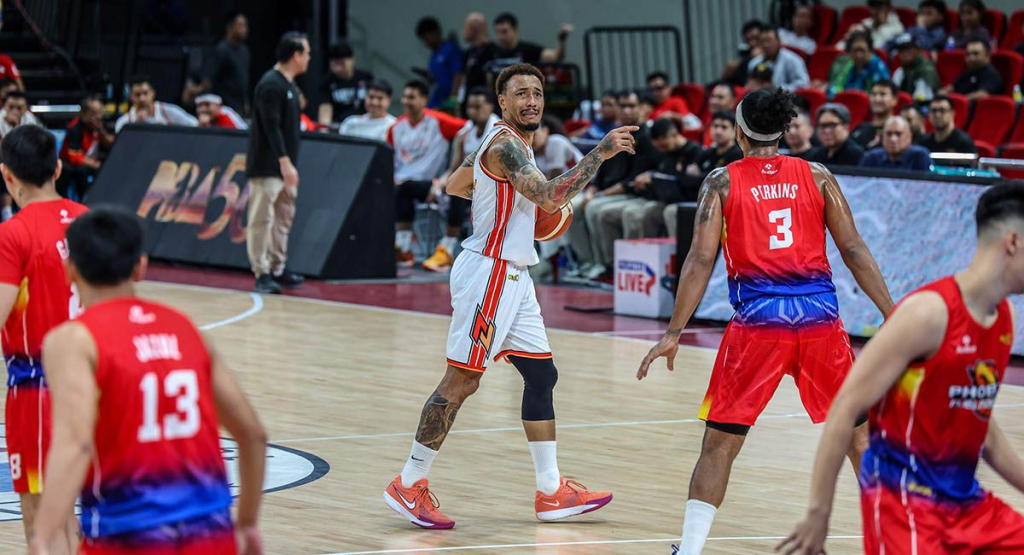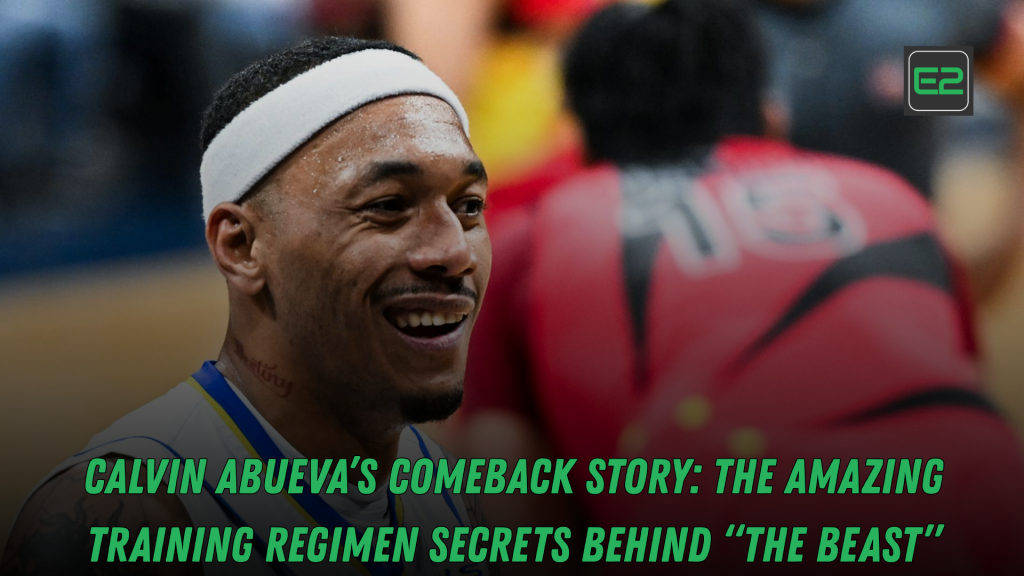Table of Contents
When a Calvin Abueva earns the nickname “The Beast,” it isn’t just because of energy plays and highlight put-backs. It’s the day-to-day discipline that keeps the engine revving—especially after a career-shaking setback. In June 2019, Calvin Abueva (then with Phoenix) was indefinitely suspended and fined, thrusting his career into limbo.
Fast-forward to October 2020: the Games and Amusements Board (GAB) reinstated Abueva’s pro license under conditions, and weeks later the PBA lifted his ban, opening the door to a long-awaited return. In 2021, Abueva moved to Magnolia, where he delivered instant impact, before a May 2025 trade sent him to NorthPort for William Navarro—proof that, even in his late 30s, teams still view him as a winning piece.
So what powered the comeback? Beyond the headlines, training architecture, mindset, and micro-habits turned a career crossroads into a second wind. This article breaks down confirmed workout elements from Abueva’s public sessions and coach interviews, then builds a replicable framework you can adapt—whether you’re a pro, a college standout, or a weekend hooper.

1) Milestones that shaped the comeback
- Indefinite suspension (June 2019) during the Commissioner’s Cup; fined ₱70,000.
- License reinstated (Oct 1, 2020) by GAB, with conditions (ethics seminar & drug testing).
- PBA ban lifted (Oct 25, 2020), enabling a return to play inside the bubble.
- Trade to Magnolia (Feb 2021) and impact stint with the Hotshots, including individual accolades.
- Trade to NorthPort (May 27, 2025) in exchange for William Navarro, signaling a strategic roster reset for Magnolia and a new chapter for Abueva.
Key takeaway: A comeback isn’t one decision—it’s a chain of decisions that begins the day after adversity hits. Abueva’s story shows how compliance + conditioning + consistency rebuild both trust and game shape.
2) The bodyweight circuit that kept The Beast ready
During lockdown (and while suspended), Abueva was filmed performing a seven-move bodyweight circuit confirmed by Phoenix S&C coach Aldo Panlilio:
- Side lunge to step-ups (12/side)
- Plyo step-ups (8 reps)
- Pulse squats (20)
- Standing vertical jumps (10)
- Wall sit (1 minute) → 3 sets
- Push-ups with 5-second bottom holds (10)
- Bench/chair dips (15)
Coach Panlilio noted they ran the circuit three times per week, designed to equal or surpass the metabolic demand of team practice so Abueva could plug right back in.
Why this matters: You don’t need a full weight room to build basketball-relevant power and durability. The circuit hits unilateral strength (step-ups), knee control (pulse squats), elastic power (jumps), isometric endurance (wall sit), and upper-body strength (push-ups/dips)—traits that translate directly to rebounding, screen battles, and drives through contact.
Try it: 3 days/week on non-consecutive days. Start with 2 sets, build to 3–4. Rest 60–90s between moves, 2–3 min between sets.
3) The four “engines” of Abueva-style conditioning
Abueva’s game has always been high-motor, built on four interlocking “engines.” Model these and you’ll feel the difference in Q3–Q4.
3.1 Elastic power (jump & first step)
- Exercises: standing vertical jumps, plyo step-ups, broad jumps (low volume, crisp reps).
- Cue: Fast off the floor, soft on the landing.
- Transfer: second-jump put-backs; beating bigs to the spot.
3.2 Isometric & eccentric strength (hold & control)
- Exercises: wall sits, push-ups with bottom holds, tempo squats (3-s down, 1-s pause).
- Transfer: absorbing contact, fighting over screens, staying balanced through bumps.
3.3 Unilateral strength (each leg matters)
- Exercises: side lunge to step-up, split squats, single-leg RDLs.
- Transfer: sharper cuts, deceleration on closeouts, fewer knee-valgus collapses.
3.4 Anaerobic capacity (repeated sprints)
- Protocols: 15–20s court shuttles (free-throw line ↔ half court ↔ baseline), 40–60s on / 60–90s off, 6–10 reps.
- Transfer: end-to-end plays, late-game pace, defensive scramble recoveries.
4) Court skills: repeatable drills with real-game transfer
The best strength work fails if skills don’t scale under fatigue. Build these drills into your weeks:
4.1 Rebound-to-push (rim run → kick-ahead)
- Flow: simulate defensive rebound (catch off glass) → one dribble out → outlet/kick-ahead to a cone target.
- Progression: add a trailing defender or band resistance at the waist.
- Goal: quick reshape from defense to offense, the hallmark of high-motor forwards.
4.2 Two-contact finishes
- Flow: catch on the move → body bump #1 from pad → gather → body bump #2 under the rim → finish either hand.
- Goal: desensitize the body to sequential contact you’ll see in pro lanes.
4.3 3-point catch-and-rip series
- Flow: catch on the wing → shot fake → rip baseline or middle (one hard dribble) → stop on two → floater/pull-up.
- Cue: top foot pivots first; ball and foot move together.
- Goal: punish hard closeouts—Abueva’s bread-and-butter sequences when defenders overplay.
4.4 Chaos closeouts (defense)
- Flow: coach points to any of 3 cones; player sprints, stutter-steps into a hands-high, hips-low closeout; immediately drop-step and slide to cut the drive.
- Goal: cleaner angles, fewer reach-in fouls, more contested jumpers.
5) Recovery, mobility, and sleep: the underrated superpowers
Comebacks stall when bodies can’t recover. Three pillars matter:
5.1 Mobility circuits (10–15 minutes/day)
- Hips & ankles: 90/90 hip switches, ankle rocks, calf wall mobilizations.
- T-spine: open-books, quadruped rotations.
- Dose: micro-sessions pre-practice and post-weights.
5.2 Soft tissue & breath work
- Tools: lacrosse ball for glutes/plantar, foam roll quads/IT band (short bouts).
- Breathing: 4-second inhale → 6-second exhale × 10 to drop heart rate after sessions.
- Transfer: less DOMS, steadier HRV, calmer between quarters.
5.3 Sleep hygiene
- Targets: 7.5–9 hours; consistent sleep/wake windows; blackout shades; device off 60 min pre-bed.
- Snack: casein-rich protein before sleep (yogurt/cottage cheese) aids overnight muscle repair.
Abueva’s public updates across years—plus standard elite-athlete practice—support the surgery → rehab → return arc and the importance of recovery discipline alongside training. (Media and team channels frequently documented his rehab and game-readiness status.)

6) Periodization: a 10-week “Beast-style” comeback camp
This sample plan mirrors the bodyweight circuit ethos and stacks court work + conditioning to peak for opening night.
Weeks 1–2: Reset & base
- Strength: bodyweight circuit × 2–3 sets; add split squats & band rows.
- Court: ball-handling ladders; catch-and-rip series; form shooting (200 makes/day).
- Conditioning: tempo runs (60s on/60s off × 8–10).
- Mobility: daily 10–15 min.
Weeks 3–4: Contact re-intro
- Strength: progress to 3–4 sets; add controlled eccentrics (3-s lowers).
- Court: two-contact finishes; rebound-to-push; chaos closeouts.
- Conditioning: shuttles 15–20s work/70s rest × 10–12.
- Recovery: contrast showers; breath work.
Weeks 5–6: Power & pace
- Strength: plyo emphasis (box jumps, bounds), keep volume low, intent high.
- Court: live 1-on-1 from elbows; 2-on-2 box-outs; situational scrimmages (bonus/foul trouble).
- Conditioning: broken 300s (sideline → sideline × 6), rest 90s, 4–6 sets.
Week 7: Simulation
- Scrimmage: 5×5 with officials if possible; stat live: DREB %, contest %, paint touches.
- Film: tag turnovers by type; chart shot profile (rim, mid, 3) vs. goal.
Week 8: Sharpen
- Strength: maintainers (two full-body lifts, 35–45 min each).
- Court: special situations (ATO sets, end-game).
- Conditioning: repeat sprints 10s on/20s off × 12–16.
Week 9: Taper
- Volume ↓ 30–40%; intensity stays crisp.
- Shooting: 300–400 makes, game-speed.
- Sleep: lock 8–9 hours; travel buffers.
Week 10: Game week
- Walk-throughs, scouting, confidence reps.
- Rule: arrive fresh, not fried.
7) Nutrition: fueling output and resilience
- Macros:
- Protein: 1.6–2.2 g/kg/day (lean meats, eggs, dairy, tofu)
- Carbs: periodize with workload; more on heavy practice days (rice, oats, fruit)
- Fats: olive oil, nuts, avocado for hormones & joint health
- Hydration: pre-practice 500–750 ml; sip throughout; add electrolytes in heat.
- Game-day: low-fiber carbs 3–4 hours pre-tip; simple carb top-ups (banana, sports drink) 30–60 min pre.
- Supplements (if cleared): creatine monohydrate (3–5 g/day), vitamin D3 (test-driven), fish oil EPA/DHA.
8) Mindset & identity: turning a suspension into fuel
Abueva’s arc shows the power of identity work—owning mistakes, rebuilding habits, and showing up for teammates. Post-ban, he publicly framed the ordeal as part of his growth, with media noting how the indefinite suspension reshaped his perspective and lit a new fuse.
Playbook you can copy:
- Radical candor: write two lists—What I did wrong and What I’ll do next.
- Accountability loop: weekly check-ins with a coach or mentor; track sleep, sessions, and attitude.
- Channel The Beast, choose control: play with edge but keep it inside the rules; refs love pros who self-regulate.
9) Lessons for youth and college programs
- Bodyweight is enough (at first). The Abueva circuit proves you can build speed-strength without racks and platforms.
- Unilateral > everything. Stabilizers win late-game possessions.
- Progress fatigue resistance. Use intervals that mimic possessions and defensive scrambles.
- Culture is conditioning. Reward hustle stats (deflections, box-outs won) as much as points.
- Recovery is skill. Teach breath resets and sleep hygiene from Day 1.
10) The Beast, the brand, the blueprint
- Nickname origin: In Philippine hoops lore, Abueva is widely known as “The Beast.”
- Draft & staying power: Second overall pick in 2012; more than a decade later he’s still coveted enough to headline a 2025 trade—that’s rare longevity for a high-motor forward.
- Why it endures: the blend of chaos energy + calculated work, especially the lockdown circuits and off-court discipline that kept him ready when the call finally came.
Final Word
Calvin Abueva’s comeback wasn’t luck. It was compliance, conditioning, and consistency—built in living rooms, driveways, and empty courts while the world paused. If you want your own resurgence, remember the lesson from The Beast’s playbook: You don’t earn minutes on game day—you earn them every day.

Call to Action: Build Your Own Comeback
If Calvin Abueva’s comeback blueprint lit a fire, take these two steps today:
- Download this plan: Copy the seven-move bodyweight circuit and slot it 3×/week for the next 21 days. Track jumps, RPE, and sleep. (If you want, I can turn this into a printable 4-week tracker.)
- Share your progress: Post a short clip of your session and tag your teammates. I’ll help you customize a 10-week taper before your league starts.
Frequently Asked Questions (FAQ)
1) What’s the most proven piece of Abueva’s workout we can copy immediately?
The seven-move bodyweight circuit confirmed by Phoenix S&C coach Aldo Panlilio—side lunge to step-ups, plyo step-ups, pulse squats, standing jumps, wall sit (1 min, 3 sets), push-ups with bottom holds, and bench/chair dips—performed three times per week. It’s simple, scalable, and designed to meet team-practice demands.
